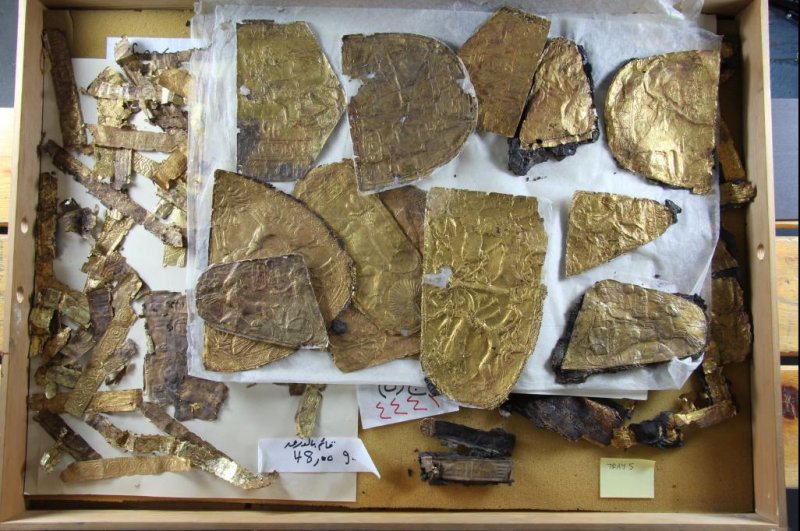https://www.upi.com/Science_News/2017/11/17/Archaeologists-analyze-King-Tuts-treasure/8681510926939/
Analysis of King Tut's treasure shows aesthetic influence of Levant

Nov. 17 (UPI) -- Archaeologists have for the first time analyzed the embossed gold motifs recovered from Tutankhamun's tomb. Tutankhamun, or King Tut, ruled Egypt between 1332 and 1323 BC.
The tomb of Tutankhamun was first excavated in 1922 -- one of the greatest archaeological finds in history. But many of the artifacts recovered from the tomb have remained in museum storage closets for years, unexamined.
Now, for the first time, a haul of gold treasure from King Tut's is being put on display at the Egyptian Museum Cairo -- having been unpacked and examined for the first time in nearly a century.
A German-Egyptian team of archaeologists recently completed an extensive survey of the gold motifs. Their analysis revealed a striking similarity between the aesthetics of the Levant and the Ancient Egypt of the pharaohs.
During their survey, researchers spent thousands of man-hours piecing together the fragments of the 100 motifs now on display. Along the way, experts in art history analyzed the unique motifs, some of which included images foreign to Egypt -- like fighting animals and goats standing at the base of the tree of life.
"Presumably these motifs, which were once developed in Mesopotamia, made their way to the Mediterranean region and Egypt via Syria," Peter Pfälzner, researcher at the University of Tübingen, said in a news release. "This again shows the great role that ancient Syria played in the dissemination of culture during the Bronze Age."
Similar images were found on motifs recovered from a tomb excavated in the Syrian royal city of Qatna.
"Now, we need to solve the riddle of how the foreign motifs on the embossed gold applications came to be adopted in Egypt," Pfälzner said.
Chemical analysis of the motifs has begun to offer archaeologists clues as to how artistic traditions move across ancient cultures.
"The results showed that the embossed gold applications with Egyptian motifs and the others with foreign motifs were made of gold of differing compositions," Pfälzner said. "That does not necessarily mean the pieces were imported. It may be that various local workshops were responsible for producing objects in various styles -- and that one used Near Eastern models."
-- Sent from my Linux system.

No comments:
Post a Comment